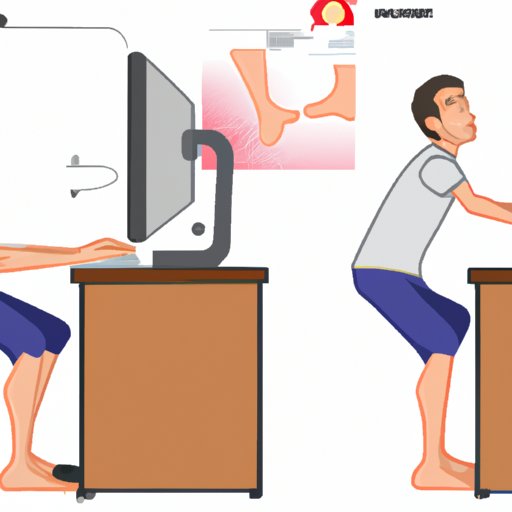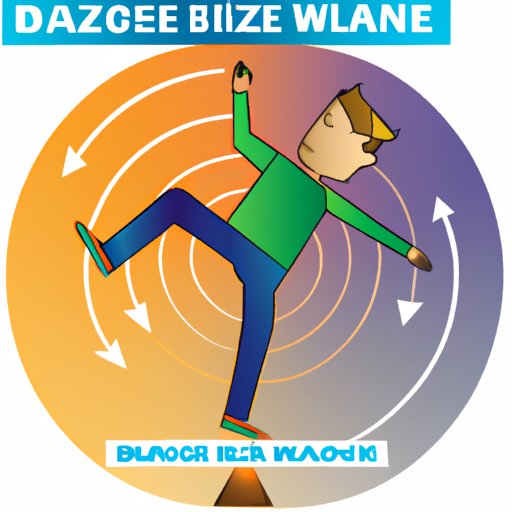Introduction
A stroke occurs when there is an interruption of blood flow to the brain. It can be caused by a blockage of an artery in the brain (ischemic stroke) or by a ruptured artery in the brain (hemorrhagic stroke). Knowing the signs and symptoms of a stroke is critical as it can help you get prompt medical attention and reduce the risk of serious complications, such as permanent disability and death.
Look for Signs of Facial Droopiness
One of the most common signs of a stroke is facial droopiness. This means that one side of the face may appear to be sagging or drooping. It can affect the mouth, eyelid, or forehead. Other possible symptoms include difficulty with facial expressions, such as smiling or frowning, and difficulty with speech.
If you think someone is having a stroke, ask them to smile. If one side of their mouth appears to droop, then they may be having a stroke. It’s important to act quickly if you notice this symptom.

Check for Difficulty Speaking or Understanding Speech
Another common sign of a stroke is difficulty speaking or understanding speech. People who are having a stroke may slur their words, have trouble finding the right words to say, or be unable to understand what others are saying. They may also experience difficulty with reading or writing.
If you suspect someone is having a stroke, ask them to repeat a simple sentence, such as “The sky is blue.” If they are unable to do so, or if their speech is slurred or difficult to understand, they could be having a stroke.

Monitor Arm and Leg Weakness
Arm and leg weakness is another symptom of a stroke. Someone having a stroke may be unable to lift both arms or move their legs. They may also experience numbness or tingling in their limbs. This can be a sign of a transient ischemic attack (TIA) or mini-stroke, which is a warning sign of a larger stroke.
If you suspect someone is having a stroke, ask them to raise both arms above their head. If one arm is weaker than the other, or if they are unable to raise both arms, they may be having a stroke.
Look for a Sudden, Severe Headache
A sudden, severe headache is another common symptom of a stroke. It may be accompanied by nausea, vomiting, confusion, or loss of consciousness. This type of headache is usually very different from the occasional headaches most people experience. It is often described as the “worst headache of my life.”
If you suspect someone is having a stroke, ask them about any sudden, severe headaches they may be experiencing. If they answer yes, it could be a sign of a stroke.
Observe Sudden Vision Changes
Sudden vision changes are another sign of a stroke. This includes blurred vision, double vision, or decreased vision in one eye. It can also cause temporary blindness in one eye. These changes can happen suddenly or gradually over a period of time.
If you suspect someone is having a stroke, ask them if they are experiencing any changes in their vision. If they answer yes, it could be a sign of a stroke.

Be Aware of Dizziness or Loss of Balance
Dizziness or loss of balance is another symptom of a stroke. This can include feeling lightheaded, unsteady on your feet, or having trouble walking. It can also cause sudden, severe vertigo (a spinning sensation).
If you suspect someone is having a stroke, ask them if they are experiencing any dizziness or loss of balance. If they answer yes, it could be a sign of a stroke.
Conclusion
Knowing the signs and symptoms of a stroke is essential. Being aware of the signs and seeking immediate medical attention can help reduce the risk of serious complications, such as permanent disability and death. If you suspect someone is having a stroke, look for facial droopiness, difficulty speaking or understanding speech, arm or leg weakness, sudden, severe headache, vision changes, or dizziness.
It is important to remember that time is of the essence when it comes to strokes. The sooner you recognize the signs and get help, the better the outcome is likely to be.
(Note: Is this article not meeting your expectations? Do you have knowledge or insights to share? Unlock new opportunities and expand your reach by joining our authors team. Click Registration to join us and share your expertise with our readers.)
